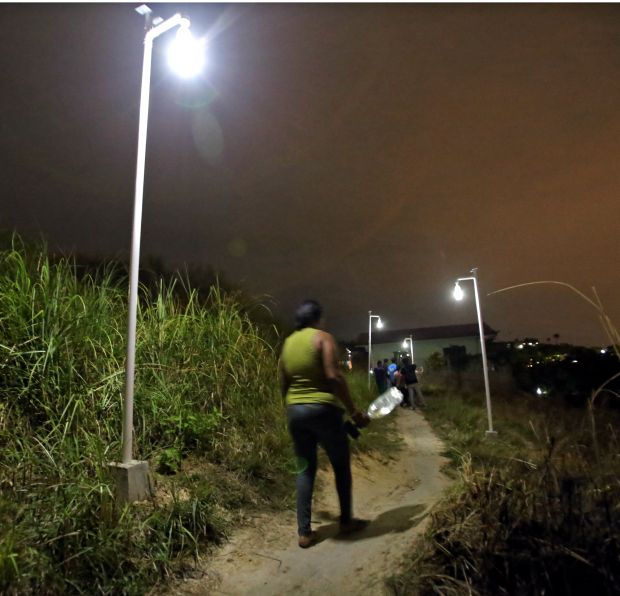400 households in the uplands of Busay in Cebu City benefit from solar power project

Flicker. A girl curiously watches the solar light bottles distributed to their community by the My Shelter Foundation Inc. (CDN PHOTO/LITO TECSON)
Old kerosene lamps and candles stand in a corner of Gloria Tuico’s home in sitio Laguerta in the upland barangay of Busay in Cebu City.
She’ll no longer be relying on them to illuminate her house as Gloria together with over 400 other residents have started using solar-powered lamps improvised from discarded soda bottles.
“Lipay jud kaayo ko ani. Maskin masakaan na mig kuryente, mao lang gihapon ni amo gamiton,” Tuico told Cebu Daily News.
(I’m so happy with this. Even if electricity reaches us, we will still use this.)
Sitio Laguerta is the project’s first beneficiary in the Visayas.
Last Wednesday evening, the Liter of Light project was formally turned over to the city government and to the community by the My Shelter Foundation Inc.
The technology was introduced to Cebu by the group’s executive director, Illac Diaz, who had taken up Urban Studies and Planning in the Massachusetts Institute of Technology (MIT) in Boston.

A resident of sitio Laguerta walks through a pathway illuminated by solar lamps.
(CDN PHOTO/LITO TECSON)
“What do you get with sunshine and an old plastic bottle filled with water and chlorine? Thanks to Alfred Moser and a group of MIT students, you get a solar bulb that refracts sunlight. It’s powerful enough to light up a home but more than that, it’s environmentally friendly, inexpensive and easy to make,” Diaz said.
The group tapped the University of San Jose-Recoletos College of Engineering in making the lights starting November last year until they started installing it in December.
“We had some of our students in the engineering department who helped in making the lights. They provided us with the parts and we just assembled them. It was all volunteer work for the students,” said USJ-R College of Engineering Dean Virgilio Abellana.
Diaz said what’s good about the “liters of light” is that it’s made with parts available locally and can be easily replaced if broken. A light assembly costs between P600-P700.
Aside from the 400 houselights, the group also installed 33 streetlamps which also tap the sun’s power.
The group also partnered with the Cebu City government through the Division for the Welfare of the Urban Poor (DWUP), which identified the site for the project.
According to DWUP head Collin Rosell, the selected village in Laguerta was one of their priorities as it doesn’t have electricity yet. It is a relocation site for some illegal settlers in the city’s port areas.
The Liter of Light project began in the Philippines with one bottle light. Eventually, the movement grew to brighten up 28,000 homes and the lives of 70,000 people in Metro Manila alone. Now, the Liter of Light is present in India, Indonesia and even as far as Switzerland.
Disclaimer: The comments uploaded on this site do not necessarily represent or reflect the views of management and owner of Cebudailynews. We reserve the right to exclude comments that we deem to be inconsistent with our editorial standards.
